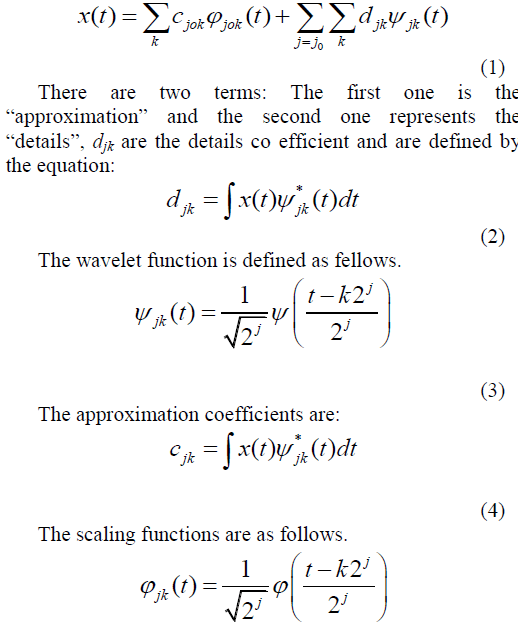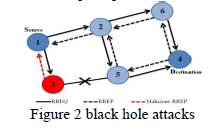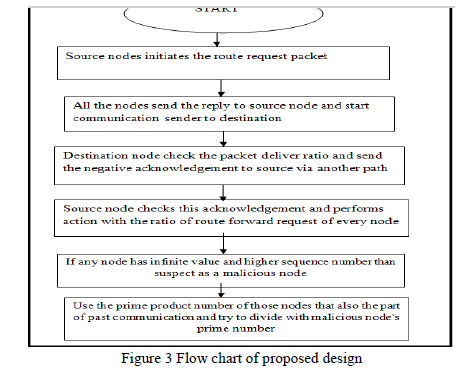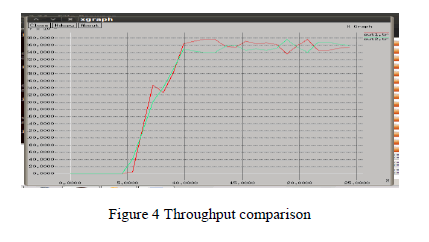ISSN ONLINE(2319-8753)PRINT(2347-6710)
ISSN ONLINE(2319-8753)PRINT(2347-6710)
B.Sabarigiri, Dr.D.Suganyadevi
|
| Related article at Pubmed, Scholar Google |
Visit for more related articles at International Journal of Innovative Research in Science, Engineering and Technology
Electroencephalogram (EEG) blend reflects the summation of the synchronous activity of thousands or millions of neurons that have parallel spatial direction. EEG Signals are extracted from Human Brain. While Extracting an EEG Signals, large amount of data with diverse categories will be collected from the human skull. To investigate and categorize the valuable information from the EEG recordings, computerized methods are required, because removing any of the components would remove too much of useful EEG signal in sequence. EEG Recordings generally not just contains electrical signals from mind, which is polluted with various artifacts. It is the combinations of unwanted mechanisms like Power Line Noise, Electrocardiogram (ECG), Electrooculogram (EOG) and Electromyogram (EMG). Signals in the EEG that are of non-cerebral origin are called artifacts. So, before analyzing the brain signals they need to be preprocessed. The focus of this paper is proposing the development of an integrated artifacts removal technique that can automatically discover and remove the artifacts in order to smooth the progress of EEG Assessment, and the hybrid pre-processing techniques is based on the joint venture of Adaptive Filtering, Wavelet Denoising and Independent Component Analysis (ICA) in order to improve the feature extraction performance of the EEG Signals. This paper converse the comparison with existing techniques, and discuss the advantages of the proposed hybrid pre-processing Technique.
Keywords |
| Electroencephalogram (EEG), Artifacts Removal, Hybrid Pre-Processing Technique, EEG Feature Extraction. |
INTRODUCTION |
| EEG measures electrical energy fluctuations resulting from ionic current flows within the neurons of the brain through h various electrodes placed on the scalp. Multiple channels and set of surface electrodes will be used for this EEG signal extraction. Brain patterns forms unusual wave shapes that are generally precise by 0.5 to 100 μV in amplitude. The frequency of brainwave in EEG is about 0-80Hz and commonly it can be divided into four types in terms of occurrence bands, which are delta (0-4 Hz), theta (4-8 Hz), alpha (8-13 Hz), and beta (13-20 Hz). Typically EEG is 100 times inferior to Electrocardiogram (ECG) signals, for the reason that of the low amplitude and the poor Signal to Noise Ratio (SNR), the EEG is awfully contaminated by the artifacts. Eye movement, Muscular activity, Eye-blinks and Jaw clenching are foundation of artifacts in the EEG signal. Since artifacts are spread several channels. |
| Power Line Artifacts (Above 50Hz) line noise, broken wire contacts and artifacts dwelling in very low frequencies and Electrode Impedances. |
| Electrooculogram (EOG) Artifacts (dc-100Hz, 10μV- 5mV) The occasion of electrical artifacts generated by eye movements, open and closing of eyes, blink infectivity produce a signal known as Electrooculogram (EOG). |
| Electrocardiogram (ECG or EKG) Artifacts (0.05Hz-100 kHz, 1-10mV) Physiological signals, such as the heartbeats are usual artifact will always be present in brain signals. |
| Electromyogram (EMG) Artifacts (500 Hz-10 kHz) The EMG, a high frequency component is due to the random contraction of muscles, while the sudden transients are due to impulsive movement of the body. This is Called Electromyogram (EMG). This well known problem that appears in the recorded EEG as intrusion causes cruel problems in EEG illumination and assessment. |
| Artifacts are increasing the complexity in analyzing the EEG and to obtaining right information. When concerning the EOG, EMG affects a large frequency band and their spectrum may vary over time. To remove the EOG, EKG, and EMG from the EEG signals, it is necessary to order the artifacts and brain waves without changing importance in terms of EEG activity. After removing the artifacts, the EEG signals will be used for features extraction. The preferred features supply a mixture of simple statistics and intricate characteristics which are associated to the nature of the physiological signals and the primary classification Problems. So, that it is important to design specific filters to decrease such artifacts in EEG records. |
| This paper is organized as follows. The various EEG Artifacts removal Techniques and its discussions are reviewed in Section 2; Section 3 gives the hybrid preprocessing techniques and its performance analysis. Finally, in the section 5, Experimental results and findings with conclusions are presented. |
RELATED WORK |
| The artifacts were reduced by using rejection filters and independent component analysis (ICA) [1] bearing in mind the rejection filters can be applied for the biomedical signals which are tainted by infrequent, short-duration artifacts. Horizontal EOG (HEOG), vertical EOG (VEOG), and EMG signals as three reference digital filter inputs, The real-time artifact removal is implemented by multi-channel least mean square algorithm were Proposed [7]. The adaptive interference cancellation is a very efficient method to solve the problem when signals and interferences have overlapping spectra. External electroencephalogram records were used in [3]. By implementing a recursive algorithm with adaptive filtering method described in a paper is fast enough for real-time processing [9], the adaptive filtering method is proposed to remove EOG; EMG artifacts signals from EEG signals [6], but high correlated signals would not identified by adaptive filters. ICA has been shown to be very well-organized for the purpose of artifact removal [2]. De-noising the EEG signal from biological/electrode and/or power-line artifacts using independent component analysis (ICA) was proposed [14]. A model of the topographic maps associated to the ICA eye blink component and a distance quantifying the resemblances to the model are defined [13], discrete wavelet Transform (DWT) or independent component analysis (ICA) was proposed [17], Four independent component analysis (ICA) algorithms (AMUSE, SOBI, INFOMAX, AND JADE) to separate myogenic activity from EEG during sleep, were used to determine the optimal method. [18], ICA and its 15 algorithms were compared to each other the various results were proposed [19]. Performance of PCA and ICA a comparative study of the performances of these methods using two measures, namely the mean square error (MSE) and the computational time of each algorithm Proposed in (Eleni kroupi et al). The comparisons of ICA algorithms JADE, COM2, SOBI, SOBIROB,(EXTENDED) INFOMAX, PICA, two different implementations of FASTICA, ERICA, SIMBEC, FOBIUMJAD, TFBSS, ICAR3, FOOBI1 and 4- CANDHAPC are briefly described in [20]. |
| There are countless techniques were discussed by several Bio signal Researchers. The most of the proposed methods had a limited success rate. Some methods took more time to carry out the required computation work and others were very multifarious for practical applications. From the detailed survey gives the following conclusions. The range of artifacts is normally unidentified; therefore, applying Basic filters would not eliminate the artifacts of EEG Signals. So, the Adaptive Filtering was used for EEG artifacts Removal. |
| The objective of an adaptive filter is to change (adapt) the coefficients of the linear filter, and hence its frequency retort, to generate a signal similar to the noise present in the signal to be clean. The adaptive process involves minimization of a cost function, which is used to conclude the filter coefficients. By and large, the adaptive filter adjusts its coefficients to diminish the squared error between its output and a primary signal. In stationary conditions, the filter should congregate to the Wiener solution. On the other hand, in non- stationary status, the coefficients will modify with time, according to the signal deviation, thus converging to an optimum filter. But, when concerning EOG and EMG measurements to design the adaptive filter, while those measurements are in general strongly correlated with artifacts. EEG and EOG have similar frequency components and cannot be eliminated by adaptive methods. |
| The Wavelet Transform of the EEG records, Transients features are completely captured and localized in both time and frequency context. However, unlike Fourier transforms, wavelets are able to functionally localize a signal in both time and frequency space, thus allowing transformed data to be concurrently analyzed in both domains (frequency and time). The wavelet transform of the noisy signal generates the wavelet coefficients which denote the correlation coefficients between the noisy EEG and the wavelet function. Depending on the choice of mother wavelet function (which may resemble the noise component), larger coefficients will be generated corresponding to the noise affected zones. Ironically smaller coefficients will be generated in the areas corresponding to the actual EEG. The larger coefficients will now be an estimate of noise. Suitable threshold limit is to be found which separates the noise coefficients and the signal coefficients. A proper Thresholding function is to be chosen to discard the noise coefficients suitably. Thresholding functions decide upon which coefficients should be retained and what should be done to them. Hence discarded coefficients would result in the removal of noise, and the retained coefficients represent the wavelet coefficients of the de-noised EEG signal. On taking the inverse wavelet transform, the de-noised signal is obtained. Hence the selection of threshold and Thresholding function plays a crucial role in EEG Denoising. Wavelet based adaptive Thresholding algorithm only to identify ocular artifact zones, which avoids the removal of background EEG information [12]. Wavelet based Denoising used to extract the low frequency component in order to eliminate the High frequency component of the appropriate signal. The purpose of conservative filtering is to process raw EEG data x (t). The selected details are cleaned by artifact components and reconstructed using Wavelet Reconstruction. |
| The wavelet expansion of a signal x (t) has the following expression: |
 |
| The details and the approximations are defined using Dj(t) and Aj(t) and the final reconstruction of the original signal can be computed by the details and the approximation, as described by the following equation, for fixed N. |
| S(t)=An(t)+D1(t)+D2(t)+D3(t)+….+DN(t) |
| The Wavelet Transform can be used in order to perform artifact removal. Its application is based on the spectral separation between the original signal and the artifact a good removal is possible only if the artifact spectral content is well localized (compactly supported). Thus, by the wavelet decomposition, it is possible to remove the artifact by means of the denoising procedure applied to the single wavelet details D1(t),D2(t),D3(t),…..,DN(t). If suppose multichannel recordings the artifact removal must be performed separately, channel by channel, by applying the same algorithm for each channel recording. ICA was formerly proposed, to recover the independent the source multi channel signals, |
| s= {s1 (t)…..sN (t), (e.g. ECG, EMG and EKG) |
| After they have been varied by an unknown matrix. Nothing is to be known about the sources or mixing process except that there are N different recorded mixtures, x={x1(t)….xN (t). The task is to recover a version U=WX of original sources S, Identical for scaling and permutation, by finding a square matrix, W, specifying spatial filters that invert the mixing process linearly. This algorithm is extremely effectual at the stage source separation in domains where a) the mixing medium is linear and spread delays are insignificant. b) The number of sources is the same as the number of sensors. c) The time course of source is free. In case of EEG signals, the multi-channel EEG recordings are mixtures of underlying brain and artifacts signals. EEG and EOG have similar frequency components and cannot be eliminated by any other methods. So, Fast ICA is employed to separate the overlapped signals from which the dominating component of the EEG is extracted [12]. |
Methodology |
| 3.1 Artifacts Avoidance: Managing artifacts is to avoid their occasion by issuing suitable directives to users. Instructing individuals to steer clear of generating artifacts during data collection has the benefit that it desires less computational demand among the artifacts handling signal. But it has a number of drawbacks. The data were collected using EEG Emotiv Epoc Device, Which are Multichannel EEG recordings collected simultaneously by 14 Channel sensors placed on scalp. |
 |
| 3.2 Cancelation of Artifacts: The proposed algorithm encompasses by the properties of the Adaptive Filtering, Wavelet Transform and ICA methods. The main steps of hybrid Pre-processing AWICA approach are the following. |
| Step 1: The Extracted EEG data were processed by Adaptive Filtering to remove Power Line Interference, broken wire contacts and Electrode Impedance (50Hz and above). |
| Step 2: To apply Wavelet Transform algorithm to 14 channels of the multichannel recordings separately. Finally, set of signals with different frequencies were obtained. |
| Step 3: The base line was removed using wavelet decomposition, and the signal was denoised by wavelets. Step 3: To identify and select the highly correlated artifact components and produce the new data set. |
| Step 4: To transfer the constructed data set to Independent Component Analysis (ICA) Block. |
| Step 5: To make the signal to be uncorrelated and apply the whitening in order reduces the dimensionality and to light the computational charge. |
| Step 6: To estimate the independent components and remove ones related to the artifacts. |
| Step 7: According to the sources ICA would split and cleaned the signals. The correlated EOG, ECG and EMG signals should be classified which will be eliminated using FASTICA. |
| Step 8: Finally, to perform the wavelet reconstruction by (7) using the non selected details and cleaned details after ICA step, finally, we obtain the multichannel recordings in which the artifacts are removed. |
| 3.3 AWICA Method: The basic adaptive noise canceller scheme is have the primary signal is called âÃâ¬Ãâ¢corrupted signalâÃâ¬Ãâ and the secondary is called âÃâ¬Ãâ¢reference signalâÃâ¬Ãâ. In this scheme, it is assumed that the corrupted signal d (n) is composed of the desired s (n) and noise n0 (n), which is additive and not correlated with s (n). Likewise, the reference x (n) is uncorrelated with s (n) and correlated with n0 (n). The reference x (n) feeds the filter to produce an output y (n) that is a close estimate of n0(n) [5]. The input d1 (n) in the first stage is the EEG corrupted with artifacts (EEG + line-frequency + ECG + EOG). The reference x1(n) in the first stage is a sine function generated with 50 or 60 Hz, depending on the line type. |
| Tests were carried out to determine the optimum values of L and μ. The order L of H1 (z), H2 (z) and H3 (z) was 128 and the coefficient convergence rates μ1, μ2 and μ 3 were 0.001. The output of H1 (z) is y1 (n), which is an estimation of the line artifact present in the EEG. This signal y1 (n) is subtracted from the corrupted d1 (n) to produce the error e1 (n), which is the EEG without line-interference. There is filter implemented at 50Hz to remove line noise and electrode impedance, which is adaptive in nature, in order to remove noise occurring at 50Hz and more than above. |
| Before eliminating the artifacts brain signals should be divided according to the frequencies. Then the wavelet decomposition performed at affixed level for each channel. Details that concern the spectral range in which the artifact is localized are selected. Wavelets are not only used as a denoising or filtering tool, but the wavelet decomposition projects each raw data into a n-dimensional orthogonal basis (consisting of the scaling function and the wavelet functions) where n-1 is the number of levels of the decomposition, while the redundancy is increased and the ICA performance is improved, therefore the decomposition is an integral part in the separation process. |
| Next ICA methods minimize a measure of statistical independence of new data set by the minima calculation of an objective function. To a good approximation, by a finite set of sources, located within the brain, each of those sources generates certain components of the EEG. Besides EEG, incorporates EOG and EMG signals in to the analysis. In the context of artifacts are generated by a subset of the extracted sources, one removes those sources, and next reconstructs the EEG from the remaining âÃâ¬Ãâ¢cleanâÃâ¬Ãâ sources. So, Fast ICA is employed to separate the overlapped signals from which the dominating component of the EEG is extracted. |
| The AWICA method built-in to EEG extraction is depicted: the first stage is an adaptive Filtering. discrete wavelet decomposition, the number of levels was set at n and the wavelet decomposition-reconstruction were performed by biorthogonal wavelets, because the wavelet functions belonging to this family have a shape which is close to the EEG shape. Once the raw data have been so projected into the n-dimensional space, the wavelet components (Approximations and details) related to EEG are selected by visual inspection and a new dataset x is built with them. The new dataset was processed by ICA, in particular by the FASTICA (Maximization of non- Gaussianity as a measure of statistical independence) algorithm and the independent components (ICs) have the following expression: |
| y = Wx |
| Where W is the demixing matrix computed according to the FASTICA; once the ICs are extracted, the IC accounting for EEG is selected. In the next section we summarize the results yielded by AWICA method and we also show a comparison with another method which proved to be efficacious and which is based on ICA, wavelet baseline removal and wavelet Denoising. |
| The hybrid preprocessing technique (AWICA method) is specifically proposed for the electroencephalographic (EEG) signals. This method merges the advantages of Adaptive filtering, wavelet decomposition and independent component analysis (ICA). |
RESULTS AND FINDINGS |
| The below fig 2 results is shows that MSE Vs SNR for SOBI, JADE, FASTICA and Infomax of ICA Algorithms with the proposed hybrid pre-processing AWICA Technique. More Precisely, SOBI, COM2, JADE, and ICAR provide a smaller amount of calculation in comparison to FASTICA and INFOMAX. Regarding performance, COM2, JADE, and FASTICA lead to best results. So, The proposed hybrid Pre-processing Technique compared with FASTICA. |
 |
 |
| The popular way of frequency analysis is power spectral analysis via Transformation, which is widely used for the standard quantitative analysis of the spectral decomposition of EEG signals. The fig 4 shows that Power Spectrum for AWICA. |
 |
CONCLUSION |
| The AWICA method was proposed for the first time for an application on electroencephalogram (EEG) signals. This method merges the advantages of Adaptive Filtering, wavelet decomposition and independent component analysis. Wavelets the proposed algorithm combines the valuable ICA knack of sorting out artifacts from brain waves, mutually among the online interference (50Hz) termination achieved by adaptive filtering. While Recording the EEG Signals, there is no leeway to stop our heart, even in the case of EOG and EMG activities, it is not easy to organize eye and other progress activities during the data recording in our body. And the amount of ocular and force activity during the online operation does not exist, and power line interference is also manifest. Finally collecting possible amount of data mining will be less due to artifacts presents in the EEG signal, particularly in cases where a consumer has a neurological disability. So, the hybrid preprocessing technique may be fruitful in the removal of artifacts. The removal of some artifacts is very hard because they are superimposed on the recordings and they corrupt biomedical signals also in regularity domain. This AWICA method improves the quality of separation and artifacts removal. We conclude that the performances of AWICA Method are better than ones obtained by Adaptive Filtering, the Wavelet Transform and ICA methods. So, the combined use of these techniques was working well in the artifacts cancellation to a wider set of corrupted recordings. |